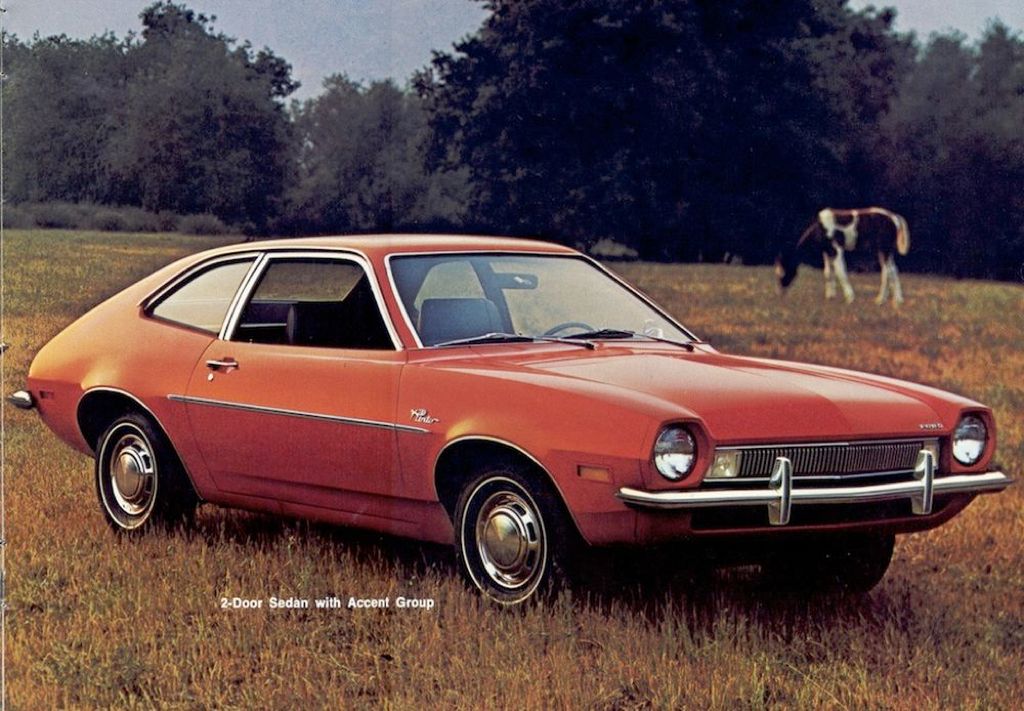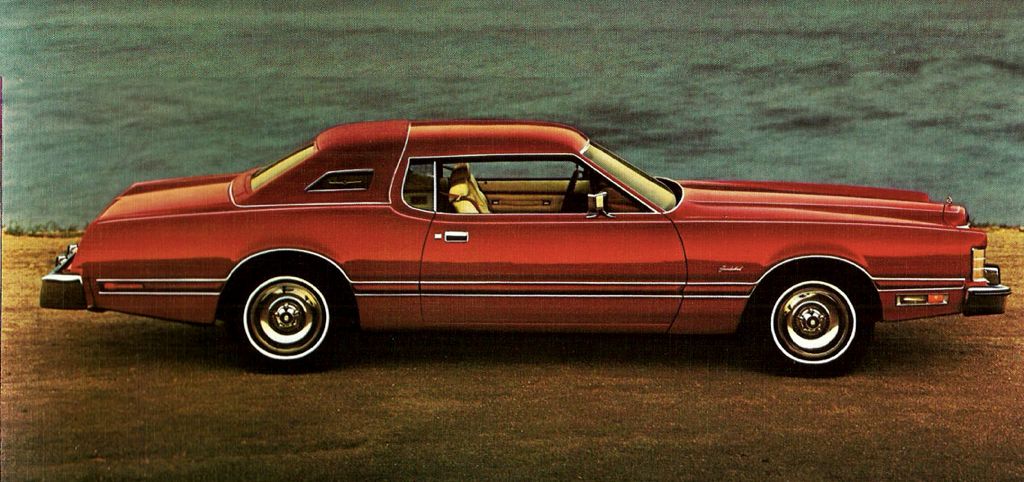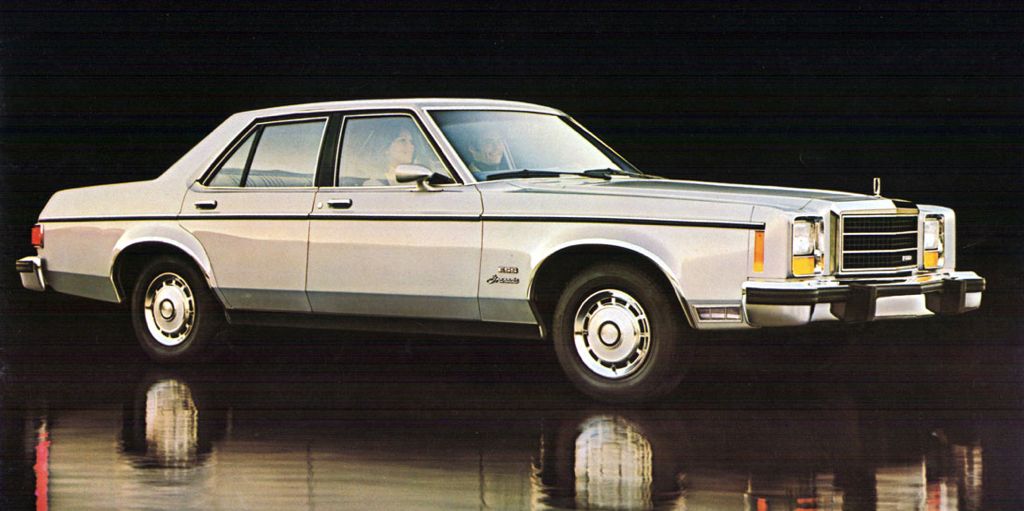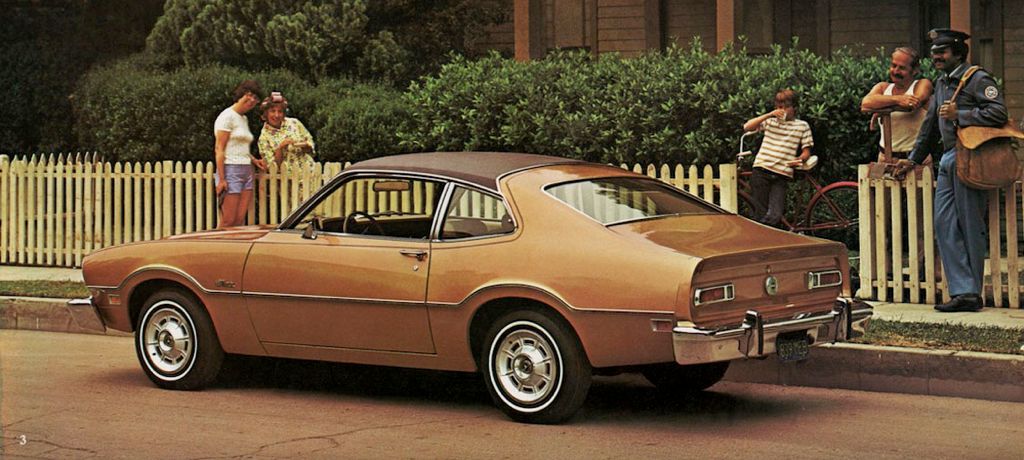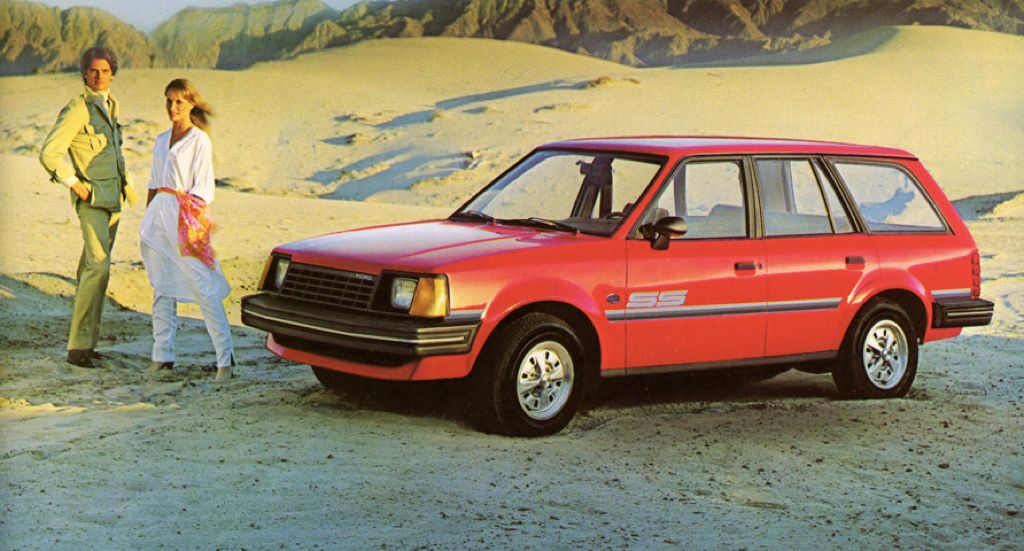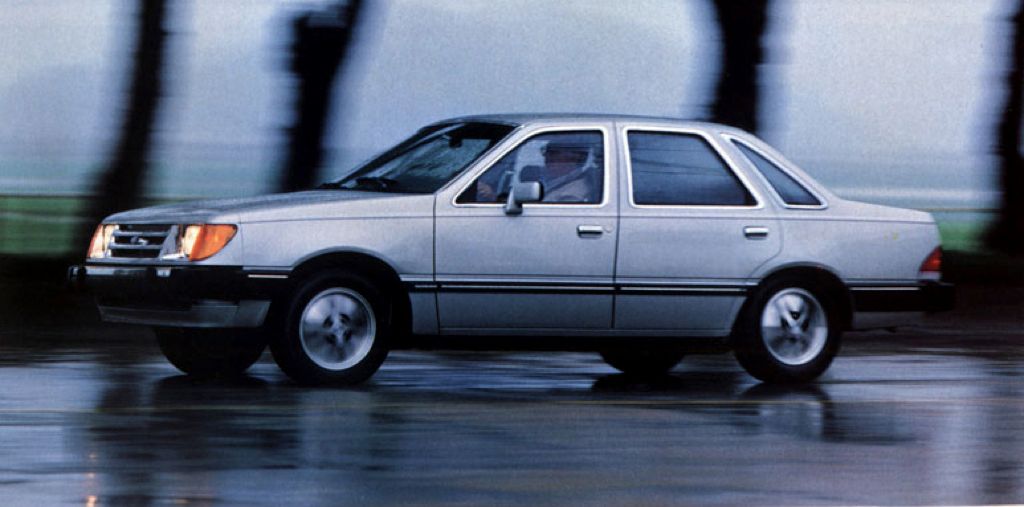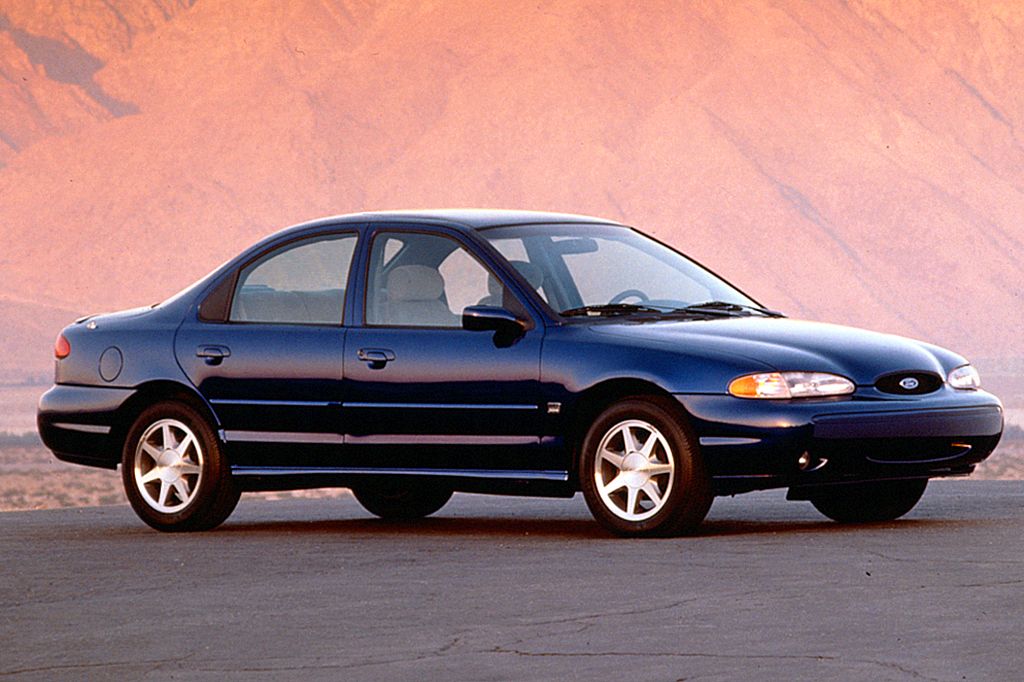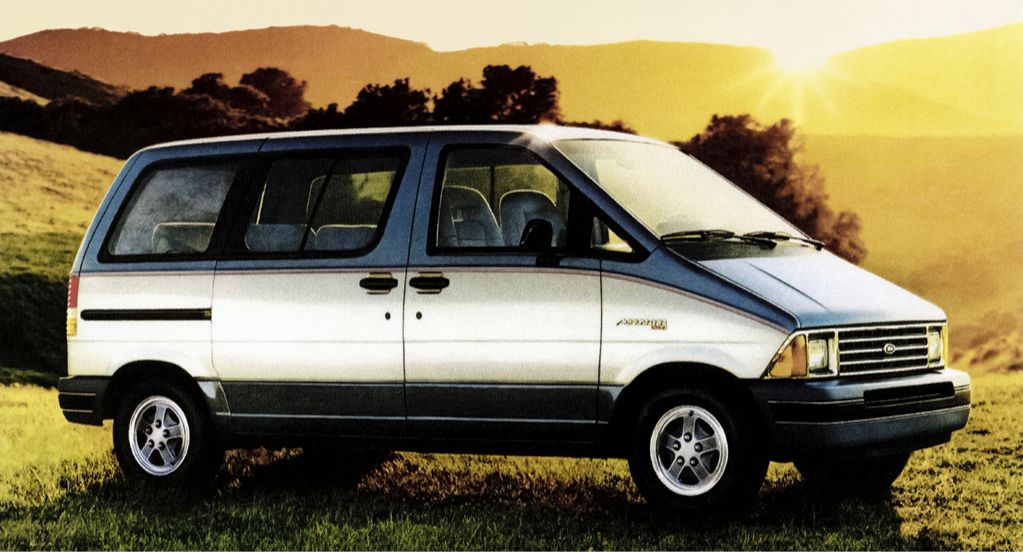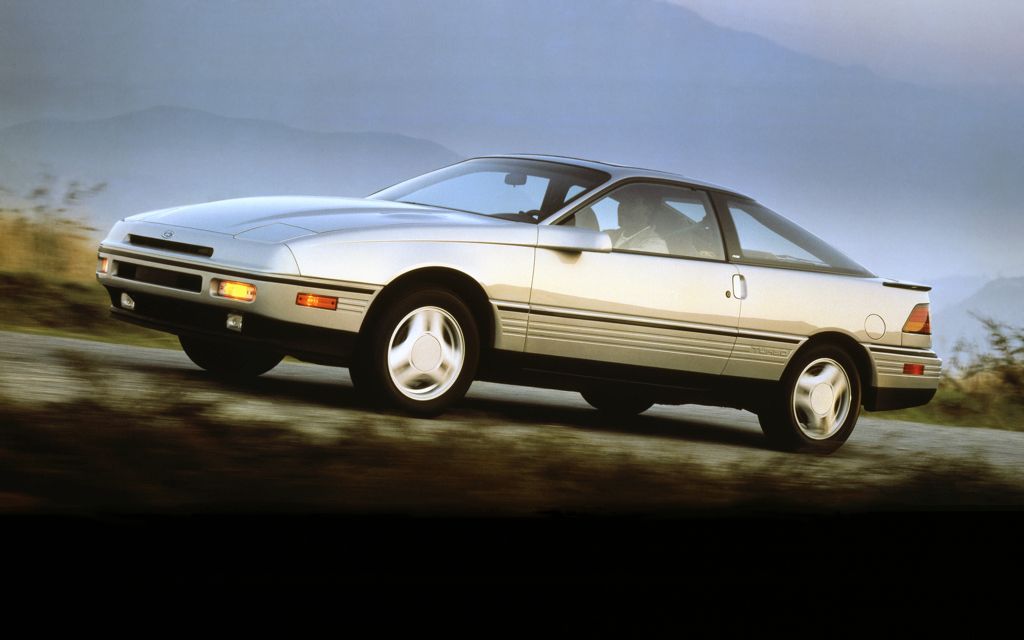Henry Ford’s first motorized vehicle, the Quadricycle, burst out of a garage in Detroit in 1896. Since then, the company that bears his name has become one of the largest automakers in the world, with manufacturing facilities on five continents and a sales presence in nearly every country. It helped put America on wheels with the Model T, invented the “pony car” segment with the Mustang, and now sells the country’s most popular vehicle (the F-series pickup).
Along the way, a lot of Ford models have come and gone … some because they outlived their usefulness, others because the marketplace changed, and still others for reasons dealing with public image and reputation. Here’s a not-so-definitive list of ten models that are no longer with us, as well as some of the reasons why.
10 Thunderbird
In 1955, Ford introduced the two-seat Thunderbird as an upscale answer to Chevrolet’s Corvette, with an array of powerful V8 engines and more luxurious interior appointments. When Ford executives decided to add a back seat in 1958 as a way to increase sales, the “personal luxury car” was born.
In the decades after that, the Thunderbird went from being a sleek and sporty coupe to a posh luxury barge and back again. After several years’ absence, the T-bird returned to market in 2002 with a “heritage design” inspired by the first-generation cars from the ‘50s. But the marketplace had moved on, and the Thunderbird — once the most luxurious and prestigious Ford — was gone for good by 2005.
9 Granada
In Europe, the Granada was Ford’s largest and most prestigious model; think of it as an LTD with an accent. In the States, the Granada was introduced in 1975 as an upscale “compact” car, though it’s actually slightly larger than the 2019 Ford Fusion. The Granada and its sister Mercury Monarch were available as a sedan and a coupe with Landau top-ready formal rear quarter window.
The Granada may be best remembered for the Ford marketing team’s attempt to pitch it (apparently seriously) as an alternative to the Mercedes-Benz W116. It also served as the poorly-disguised basis for Lincoln’s first compact luxury car, the Seville competitor called the Versailles. Eventually, the Granada moved to the ubiquitous Fox platform before being renamed LTD in 1983.
8 Maverick
Ford’s 1960 Falcon was a critical platform for the automaker. Not only did it carry the Ford and Mercury-branded compact line into 1970, but it also was the basis for the first Mustang … and in shortened form, the Maverick, introduced in 1970 as a new competitor for the Chevrolet Nova and the Dodge Dart/Plymouth Valiant. First available as a two-door, Ford stretched the Maverick to four doors for ’71. Engines ranged from the Falcon’s six-cylinder engines to (eventually) a 5.0-liter V8, with performance packages like “Grabber” and “Stallion” to provide added visual verve.
The Maverick was so popular, it resisted Ford’s effort to replace it with the Granada in 1975. Eventually, it went out to pasture after the 1977 model year.
7 Fairmont
When the first Fairmont broke cover in 1978 to replace the Maverick, it’s fair to say that no one imagined its rear-drive Fox platform would wind up being as critical for Ford as the K-car chassis was for Chrysler. The versatile Fox component set would underpin everything from the Mustang and Thunderbird to the Lincoln Continental and Mark VII.
The Fairmont was available as a two- and four-door sedan, a station wagon and the Thunderbird-inspired Futura coupe. The Mercury version borrowed the storied “Zephyr” name from Lincoln. While the Fairmont was only sold until 1983, its platform would live on under the Mustang until 2005.
6 Escort
Ford’s UK operation had been selling rear-drive Escort sedans for more than a decade in the competitive small-car segment when Ford decided its successor would be a front-drive hatchback and would form the basis for the company’s first “world car;” that is, one that's substantially the same around the world, making it easier to amortize development costs.
However, Ford hedged its bets, and the Escort that arrived in the U.S. in 1981 was very different from the version sold overseas. It was a smash hit in trim levels ranging from base to sporty, and survived three generations (two based on Mazda platforms) before being replaced by a true “world car,” the Focus.
5 Tempo
The early 1980s saw American carmakers rethink their philosophy toward smaller cars, and replace their legacy rear-drive compacts with European- and Asian-inspired front-drive designs. At Ford, engineers stretched the Escort platform to create the Tempo (and sister Mercury Topaz) to supplant the Fairmont/Zephyr twins. Powered by a new 2.3-liter four-cylinder engine pumping out a fearsome 90 horsepower, the Tempo and Topaz would eventually offer the Taurus’ 3.0-liter V6, as well as a range of trim levels from basic to ‘80s-luxurious.
No one would ever mistake the Tempo for a high-performance car, but it sold well for its entire run, and examples can still be seen on the road today. It would eventually be replaced in the midsize space by the Contour.
4 Contour
Despite the failure of the front-drive Escort to be a true “world car,” Ford decided to try again in the '90s, as it replaced Europe’s Sierra and the American Tempo with a single model, called the "Contour" in the U.S. and the "Mondeo" in Europe. Designers and engineers benchmarked the Honda Accord and the Nissan Primera/Infiniti G20 during development, but the final product came to market with an interior considerably smaller than its competitors. That and a higher price than the outgoing Tempo blunted the Contour's popularity in a critical market segment, even as its driving dynamics received universal praise.
The Contour and sister Mercury Mystique stayed in production until 2000, and also spawned the “New Edge”-look Mercury Cougar sporty hatchback. Ford eventually returned to the midsize market with the Fusion.
3 Aerostar
In the early 1970s, Ford was developing what would have been America’s first minivan, the Econoline-based “Carousel.” But executives worried it would hurt sales of the Country Squire wagon, and the “garageable van” was shelved. Later, when Ford fired executives Lee Iacocca and Hal Sperlich, they brought their expertise to Chrysler and helped guide the introduction of the pioneering Caravan and Voyager.
The screaming popularity of the K-car-based minivans caught other automakers off guard, including Ford, which rolled out its Ranger truck-based Aerostar in 1986. Despite its Henry-come-lately status, the Aerostar proved popular with shoppers, and was eventually replaced by the Taurus-based Windstar/Freestar vans in 1997.
2 Probe
As Ford’s US operation shifts its passenger vehicle production to crossovers and SUVs, one car remains: the Mustang. After all, the first “pony car” is a cultural icon and a Ford image leader around the world. So it’s still a little shocking to think that a generation ago, Ford planned to move the Mustang name to a front-drive platform shared with the Mazda 626.
A predictable hue and cry arose from Mustang fans worldwide, forcing Ford to squeeze a few more years out of its Fox-based Mustang. And the car that was reportedly to be named “Mustang III” became the Probe, after a series of aero Ford concepts in the late ‘70s and ‘80s. The little sports hatch was decent enough and lasted through two generations, until the sporty coupe market dried up in the late 90s.
1 Pinto
Ford’s Pinto may be one of the most misunderstood cars ever produced. Drivers bought about three million Pinto coupes, hatchbacks and wagons over ten years on the market, in a competitive segment that included AMC’s Gremlin, the Chevrolet Vega, and then-new imports from Toyota, Honda and Nissan. With the right checks of the option form, buyers could turn their Pintos into anything from a Country Squire-style estate car to a tiny custom van to a sports coupe.
But let’s be honest: you’re thinking about the fire thing, aren’t you? Several high-profile lawsuits over fiery rear-end collisions involving Pintos — and inaccurate reporting of Ford’s cost-benefit analysis related to the Pinto’s fuel tank design — turned the little car into a punchline. However, an analysis completed years later revealed that the Pinto was actually about as safe as its competitors. It was eventually replaced by the Escort in 1981.

